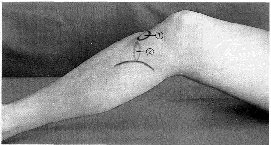Chikungunya Fever
Chikungunya fever, is a viral illness that is spread by the bite of infected mosquitoes. The disease resembles dengue fever, and is characterized by severe, sometimes persistent, joint pain (arthritis), as well as fever and rash. It is rarely life-threatening. Nevertheless widespread occurrence of diseases causes substantial morbidity and economic loss
Epidemiology
Epidemics of fever, rash and arthritis, resembling Chikungunya fever have been recorded as early as 1824 in India and elsewhere. However, the virus was first isolated between 1952-1953 from both man and mosquitoes during an epidemic of fever that was considered clinically indistinguishable from dengue, in the Tanzania.
Chikungunya fever displays interesting epidemiological profiles: major epidemics appear and disappear cyclically, usually with an inter-epidemic period of 7-8 years and sometimes as long as 20 years. After a long period of absence, outbreaks of CHIK fevers have appeared in Indonesia in 1999.
Chikungunya in Asia (1960-1982)
Between 1960 and 1982, outbreaks of Chikungunya fever were reported from Africa and Asia. In Asia, virus strains have been isolated in Bangkok in 1960s; various parts of India including Vellore, Calcutta and Maharastha in 1964; in Sri Lanka in 1969; Vietnam in 1975; Myanmar in 1975 and Indonesia in 1982.
Recent occurrences of chikungunya fever
After an interval of more than 20 years, chikungunya fever has been reported from several countries including India, and various Indian Ocean islands including Comoros, Mauritius, Reunion and Seychelles.
Chikungunya fever in India
Till 10 October 2006, 151 districts of eight states/provinces of India have been affected by chikungunya fever. The affected states are Andhra Pradesh, Andaman & Nicobar Islands, Tamil Nadu, Karnataka, Maharashtra, Gujarat, Madhya Pradesh, Kerala and Delhi.
More than 1.25 million cases have been reported from the country with 752,245 cases from Karnataka and 258,998 from Maharashtra provinces. In some areas attack rates have reached up to 45%.
Chikungunya and dengue fevers
The clinical manifestations of chikungunya fever have to be distinguished from dengue fever. Co-occurrence of both fevers has been recently observed in Maharashtra state of India thus highlighting the importance of strong clinical suspicion and efficient laboratory support.
Laboratory Investigation
The clinical manifestations of chikungunya fever resemble those of dengue fever. Laboratory diagnosis is critical to establish the cause of diagnosis and initiate specific public health response.
Treatment, prevention and control
Treatment
Chikungunya fever is not a life threatening infection. Symptomatic treatment for mitigating pain and fever using anti-inflammatory drugs along with rest usually suffices. While recovery from chikungunya is the expected outcome, convalescence can be prolonged (up to a year or more), and persistent joint pain may require analgesic (pain medication) and long-term anti-inflammatory therapy.
Prevention and control
No vaccine is available against this virus infection. Prevention is entirely dependent upon taking steps to avoid mosquito bites and elimination of mosquito breeding sites.
To avoid mosquito bites:
![]() Wear full sleeve clothes and long dresses to cover the limbs;
Wear full sleeve clothes and long dresses to cover the limbs;
![]() Use mosquito coils, repellents and electric vapour mats during the daytime;
Use mosquito coils, repellents and electric vapour mats during the daytime;
![]() Use mosquito nets – to protect babies, old people and others, who may rest during the day. The effectiveness of such nets can be improved by treating them with permethrin (pyrethroid insecticide). Curtains (cloth or bamboo) can also be treated with insecticide and hung at windows or doorways, to repel or kill mosquitoes.
Use mosquito nets – to protect babies, old people and others, who may rest during the day. The effectiveness of such nets can be improved by treating them with permethrin (pyrethroid insecticide). Curtains (cloth or bamboo) can also be treated with insecticide and hung at windows or doorways, to repel or kill mosquitoes.
![]() Mosquitoes become infected when they bite people who are sick with chikungunya. Mosquito nets and mosquito nets and mosquito coils will effectively prevent mosquitoes from biting sick people.
Mosquitoes become infected when they bite people who are sick with chikungunya. Mosquito nets and mosquito nets and mosquito coils will effectively prevent mosquitoes from biting sick people.
To prevent mosquito breeding
The Aedes mosquitoes that transmit chikungunya breed in a wide variety of manmade containers which are common around human dwellings. These containers collect rainwater, and include discarded tires, flowerpots, old oil drums, animal water troughs, water storage vessels, and plastic food containers. These breeding sites can be eliminated by
![]() Draining water from coolers, tanks, barrels, drums and buckets, etc.;
Draining water from coolers, tanks, barrels, drums and buckets, etc.;
![]() Emptying coolers when not in use;
Emptying coolers when not in use;
![]() Removing from the house all objects, e.g. plant saucers, etc. which have water collected in them
Removing from the house all objects, e.g. plant saucers, etc. which have water collected in them
![]() Cooperating with the public health authorities in anti-mosquito measures.
Cooperating with the public health authorities in anti-mosquito measures.













